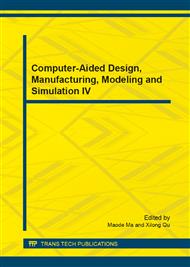p.77
p.81
p.86
p.93
p.98
p.103
p.108
p.114
p.119
Improved Clustering Algorithm of Spatial Data Structure Based on Matlab Simulink
Abstract:
This paper has introduced the clustering algorithm into the model of urban tourism destination consumption structure, and has used MATLAB programming algorithm to improve the calculation model of consumption structure for tourism destination, which has obtained the spatial data model of the consumption structure. The model roundly considers the influence of geographical location, cultural factors, political factors and economic factors, and it establishes new clustering algorithm model with four coefficients, and has realized the algorithm by the use of MATLAB programming. Finally, the consumption structure of the same destination in different provinces is calculated by using the spatial system model, which has obtained the calculation curve of consumption space structure and the clustering results, and has provided technical reference for the research on consumption of urban tourism destination.
Info:
Periodical:
Pages:
98-102
Citation:
Online since:
October 2014
Authors:
Price:
Сopyright:
© 2014 Trans Tech Publications Ltd. All Rights Reserved
Share:
Citation:


